![]()
![]()
![]()
Use LEFT and RIGHT arrow keys to navigate between flashcards;
Use UP and DOWN arrow keys to flip the card;
H to show hint;
A reads text to speech;
38 Cards in this Set
- Front
- Back
|
Reduction |
Increasing hydrogen or decreasing oxygen content |
|
|
Oxidation |
Increasing oxygen or decreasing hydrogen content |
|
|
Alcohols by reduction of carbonyls |
Carboxylic acid(O=C-OH) to primary alcohol Aldehyde (O=C-H) to primary alcohol Ketone (O=C) to secondary alcohol Ester(O=C-O) to primary alcohol |
|
|
Reduced by LiAH |
All carbonyl groups, carboxylic acids, ketone, ester, aldehyde |
|
|
Reduced by sodium borohydride (NaBH4) |
Ketone and aldehyde |
|
|
Swern oxidation |
Oxidation of primary alcohol to aldehyde or secondary alcohol to ketone DMSO, (COCl)2, Et2N COLD |
|
|
Oxidation of primary alcohol to carboxylic acid |
Potassium permanganate (KMnO4), usually carried out in aqueous MnO2 |
|
|
Oxidation of secondary alcohol to ketones |
Chromic acid, H2CrO4 and Jones reagent CrO3 |
|
|
CrO3-> Cr3+ |
From 6+ to 3+, clear orange to greenish opaque |
|
|
Prep of organolithium and organomagnesium |
Prepared by reacting alkyl halides with lithium or reactive halides in ether |
|
|
Reactions of Grignard Reagents with Oxiranes (epoxides) |
Reaction results in a ring opening and formation of alcohol, occurs at the least substituted ring carbon, carbon carbon bond two bonds from the alcohol |
|
|
Alcohols from Grignard reagents |
Aldehydes and ketones react to yield alcohols, esters=tertiary, ketone=tertiary, |
|
|
Use of Lithium Reagents |
Organolithium reacts like a Grignard reagent Sodium alkynided react with aldehydes and ketones to form new C-C bonds |
|
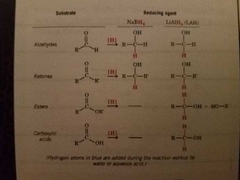
|
Reducing agents |
|

|
Oxidizing agents |
|
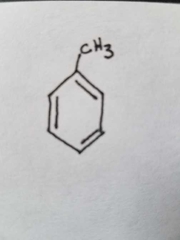
|
Toluene |
|
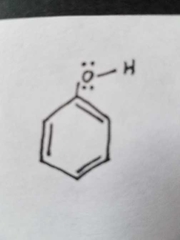
|
Phenol |
|
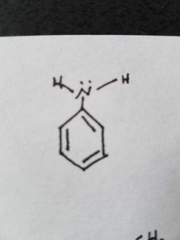
|
Aniline |
|
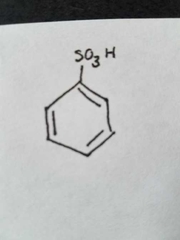
|
Benzenesulfonic acid |
|
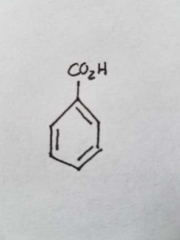
|
Benzoic acid |
|
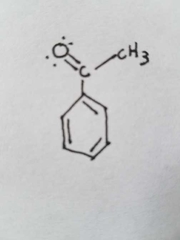
|
Acetophenone |
|
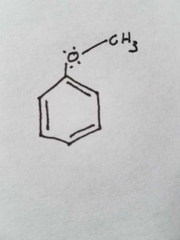
|
Anisole |
|
|
Xylene |
Dimethyl substituted benzene |
|
|
Huckel's Rule |
4n+2pi 2,6,10,16,18,22,etc |
|
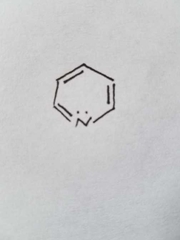
|
Pyridine |
|
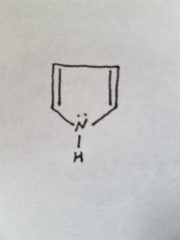
|
Pyrrole |
|
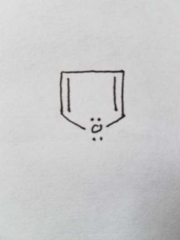
|
Furan |
|
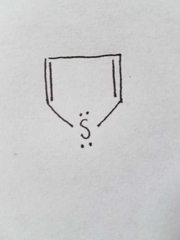
|
Thiophene |
|
|
Halogenation |
X2, FeX2 where X is Cl, Br Adds on X to benzene,HX is an additional product |
|
|
Nitration |
HONO2, H2SO4 Adds NO2 to benzene, water is an additional product |
|
|
Sulfonation |
SO3,H2SO4 Adds SO3H to benzene |
|
|
Friedel-Crafts Alkylation |
RCl, AlCl3 (R can rearrange) Adds R group to benzene, HCl is additional product |
|
|
Friedel Crafts Acylation |
RC(=O above)Cl, AlCl3 Adds O=C-R to benzene with HCl as additional product |
|
|
Clemmensen reduction |
Reduces phenyl ketones to the methylene(CH2)group Zn(Hg), HCl in reflux or heat |
|
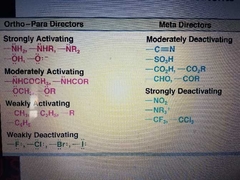
|
Classification of substitutents |
|
|
Birch Reduction |
Takes one double bond out of benzene Na, NH3, EtOH Li, liq. NH3, EtOh can be reduced further with H3O+, H2O |
|
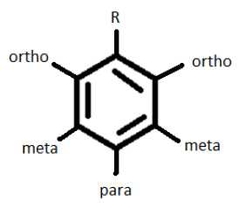
|
Directions |
|
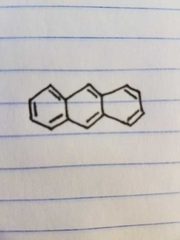
|
Anthracene, aromatic |

